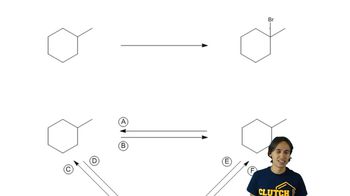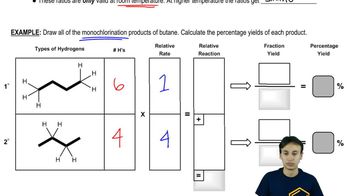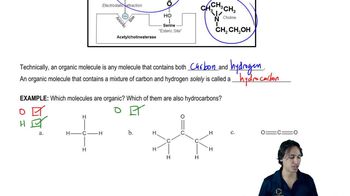For the following reaction, answer questions (a)–(d).
(a) Give an arrow-pushing mechanism, including the initiation step and two propagation steps.
 Verified step by step guidance
Verified step by step guidance Verified video answer for a similar problem:
Verified video answer for a similar problem:



 2:05m
2:05mMaster The one reaction that alkanes will actually undergo. with a bite sized video explanation from Johnny
Start learning